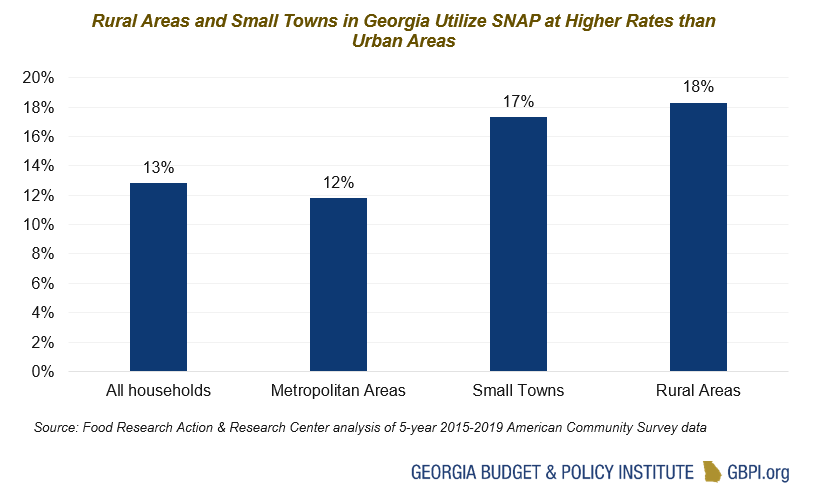Amid the high cost of food and a baby formula shortage pushing up prices for a critical source of infant nutrition, the Kemp Administration has declined to extend the Pandemic Supplemental Nutrition Assistance Program (P-SNAP). The pandemic created significant hardship among Georgia households including a rise in food insecurity, which is the consistent inability to access enough food. The last of the enhanced payments will go out at the end of May, and the loss of tens of millions in P-SNAP benefits may contribute to another rise in food insecurity and the need for emergency food providers among the almost 2 million individuals that receive SNAP.
In March 2020, the Family First Coronavirus Response Act granted states permission to provide supplemental benefits to give households the maximum SNAP benefit based on household size. P-SNAP extended an average of about $75 per individual on SNAP to help Georgians afford food during the economic downturn caused by the pandemic.[1] However, the additional support has also been critical as inflation has pushed up the cost of food and other essentials. With the latest figures showing about 1.6 million individuals on SNAP in Georgia, the end of the program could mean a loss of about $120 million in benefits.[2]
Additional SNAP benefits support people who are unemployed and workers earning low wages. While more people may be finding jobs today, low unemployment figures do not always translate into economic security, especially for Black and Brown people. Georgia’s low unemployment rate masks the higher levels of unemployment for Black workers. And research shows that Black workers take longer to recover from economic downturn than white workers. Furthermore, more Black workers are involuntarily working part-time jobs than before the pandemic, leaving them with less earnings. In short, many families of color are still struggling to make ends meet even if they are working, and the loss of P-SNAP will only add to the stress.

The loss of P-SNAP will be harder in less urbanized areas of the state. Rural communities and small towns, which often have few available jobs and utilize SNAP at a greater rate than urban areas (see graphic). Moreover, many rural counties have some of the highest rates of food insecurity in the state. As P-SNAP ends and costs remain high, people experiencing hardship in rural communities are continuously forced to make tough decisions about essentials like gas and food.
Georgia is emerging from the pandemic’s economic downturn, but the recovery is unequal and the inequities that existed before the pandemic persist. Policymakers should utilize temporary stimulus dollars as a starting point to advancing racial equity and should consider how to use state and federal resources for a vision of Georgia where Black, Brown, and white people, urbanites and long-time rural residents have a foundation for economic opportunity.
Endnotes
[1] Based on administrative data from the U.S. Department of Agriculture.
[2] GBPI calculation of average P-SNAP benefits and latest USDA figure of SNAP cases.





